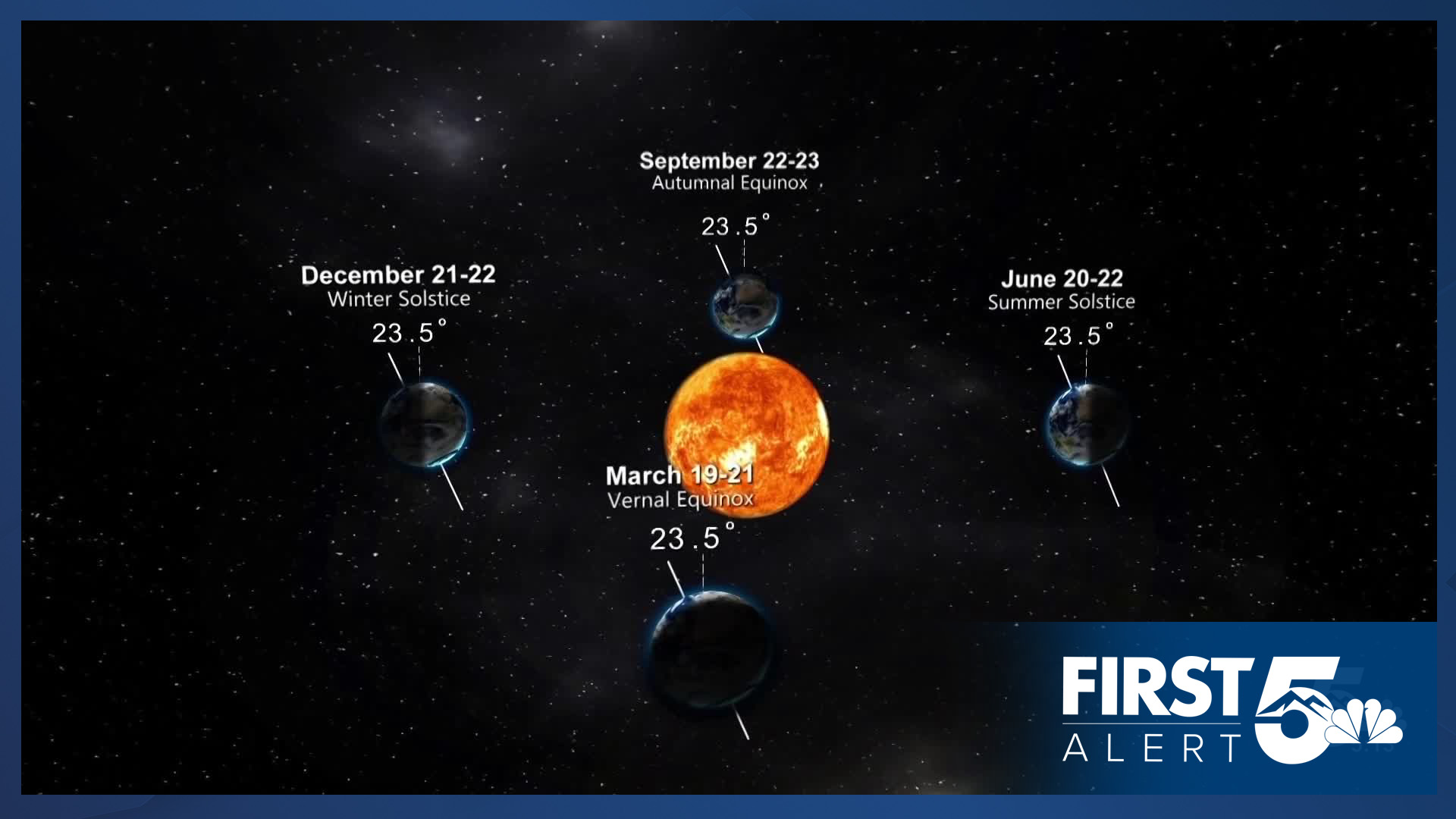From this past July to our upcoming January, Earth gets nearly 2 million miles closer to the sun. At the same time, average highs in Colorado Springs and Pueblo go from 86 and 93 degrees to 45 and 48 degrees respectively.
But more importantly than miles, the temperature difference is all about angles.
Earth's orbit is not a perfect circle — it's very slightly oval shaped. In the summer in the Northern Hemisphere, it's about 94.5 million miles from Earth. In the winter, it's about 92.5 million miles.
This is about 3% closer. But, of course, we don't see a 3% increase in temperatures, even relatively speaking.
Think of it like shining a flashlight on a beach ball. The light is brightest at the center of the ball and dimmest at the ends, which are the poles. If you tilt the ball, one half gets more light than the other half.
Earth does the same thing. Earth is tilted on its axis about 23.5 degrees.
The part of Earth that gets more light changes through the year. So it's the tilt that gives us the seasons, the temperature changes and the massive swings in daylight from summer to winter — not how close or far we are from the sun.
This story was reported on-air by a journalist and has been converted to this platform with the assistance of AI. Our editorial team verifies all reporting on all platforms for fairness and accuracy.
____
Have a question or story idea you would like the First Alert 5 Weather team to consider? Email: weather@koaa.com

Watch KOAA News5 on your time, anytime with our free streaming app available for your Roku, FireTV, AppleTV and Android TV. Just search KOAA News5, download and start watching.




